What is a motherboard and what are its most important components?
Motherboard, the main and largest element in your computer, one of the things that many people do not understand is the function of the motherboard and its components, I mean there are many parts on this board, and many of us do not know the importance of these parts, what their name is, and what the function of each of them is.
In this article, we take a quick tour of the motherboard, talk about its importance and talk about each of its parts and the importance of each piece, so that this article is a reference for you about one of the most important pieces of hardware in your device, so follow us.
What is a Motherboard?
The motherboard is the main part of any computer, it is the element that carries all the components and components of the computer and communicates between them, and organizes the transfer of data and information between each part and the other, while controlling the rest of the components of the device and modifying the functions of the rest of the device, you can consider it the main controller of the performance and speed of other parts such as the processor and graphics card .
it is called by many names such as Mainboard and System board or Printed Wire Board, which are obvious names due to the function of the board in the device, the motherboard is the largest means of communication in the computer and is responsible for most of the communication processes between the parts of the device and each other, whether directly such as the processor and memory, or indirectly such as hard disks and main power units or PSU and the rest of its parts.
The importance of the motherboard
It is the basic building block of the computer, all the parts of your computer are connected to it, from the processor, graphics card, storage memory, whether SSD, HDD, or random access memory, and many of the motherboard's ports. Everything you use on the device is connected to the motherboard in one way or another, and it is the one that connects all these parts to each other and transmits data from one part to another.
The importance of the motherboard in points
- Allow data to be exchanged between all parts of the computer.
- Perform basic input and output operations to and from the hard disk.
- Determines the upgradability of the device and whether future parts will be compatible with the current board or not and will need to be updated.
- Determine what type of devices can be connected to your computer.
- Improved communication between components to the point that high-efficiency motherboards are faster than inferior ones even if the components installed are similar.
Motherboard components
CPU Socket
One of the most sensitive points in the motherboard is the processor socket, call it what you call it, it consists of a large group of pins or openings for the main processor that you will connect to the device, there are two types of sockets .
or processor sockets based on the processor that you will install in the motherboard, there is the LGA1700 socket that Intel adopts in its twelfth generation processors, and the AM4 socket that AMD adopts in its fourth generation Ryzen processors, processor companies are the ones who make their own sockets anyway, the sockets are divided into 3 types depending on the nature of the connection or the form of connection between the processor and the motherboard.
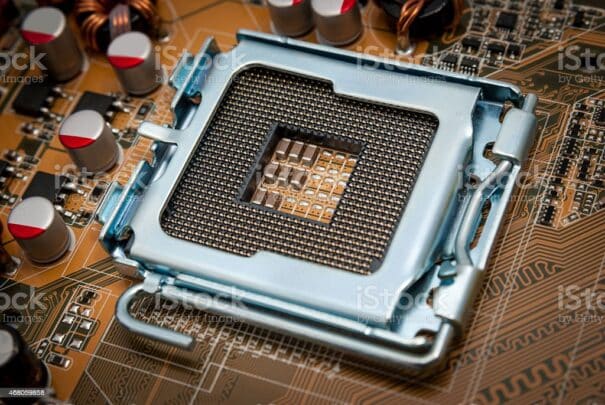
Types of processor inputs
- LGA: In this type, the processor's connection pins are located in the socket itself, and the processor is just a receiver for the pins. This makes the processor less susceptible to any damage that may occur to it, but you must be careful when dealing with the socket so that no pin is bent. Intel uses this type of socket in its own sockets.
- PGA (Pin Grid Array) This is the opposite of the previous type. The contact pins are located in the processor itself, but the socket receives them, unlike the previous input. Thus, the processor is more susceptible to damage from the socket.
- ZIF (Zero Insertion Force) can be considered as this type applies to the other two types, the idea here is that it depends on a lever to open and close the contact unit places or contact places and then this helps to install the processor easily and close the lever to tightly close the processor on the motherboard, AMD uses a PGA-ZIF socket but there is news about the intention to use it for the LGA socket in the future
You should know that sockets and their generations differ in the arrangement, distribution shape and number of connection pins, so you should be careful when buying a new motherboard.
The motherboard must be compatible with the processor you are buying, because any mistake may lead to bending these pins, which in turn leads to a disaster in your device. There are types dedicated to servers and heavy workstations to withstand the power of high processors, such as the AMD Threadripper, which carries the size of two processors next to each other.
Memory slots
Memory slots or RAM ports are located on both sides of the processor port or just to the right of it depending on the type of motherboard. As its name suggests, it is used to install RAM or random access memory.
You install DIMM chips or Dual Inline Memory Module inside it, which consist of DRAM or Dynamic Random Access Memory circuits that store data and files that the processor works on and reviews and processes.
Contrary to what many people think, RAM is not the main factor responsible for the speed of the device. It is one of the contributing factors to that. We talked about it in detail in our article on the types of RAM and its benefits. You can visit this article .

There are many types and generations of RAM and the input varies depending on the type and generation of memory. There is DDR, DDR2, DDR3, DDR4 and DDR5, which appeared very recently. It is difficult to find a type of RAM less than DDR4 now. Each type has a different input than the previous type and RAM can only be installed in one direction.
Chipsets
Chipsets connect the processor to the rest of the system components such as RAM, GPU, and Internet card, and connect the processor to additional components that are connected to the device such as the mouse, keyboard, screen , and printer.
This connection process takes place within many circuits or control chips that are assembled within the central chips or Chipsets.
Chipsets currently consist of two sections, the first section was located in the northern section of the board and is called the north bridge, while the second section is located in the south, and yes, you warned the name correctly, it is called the south bridge.
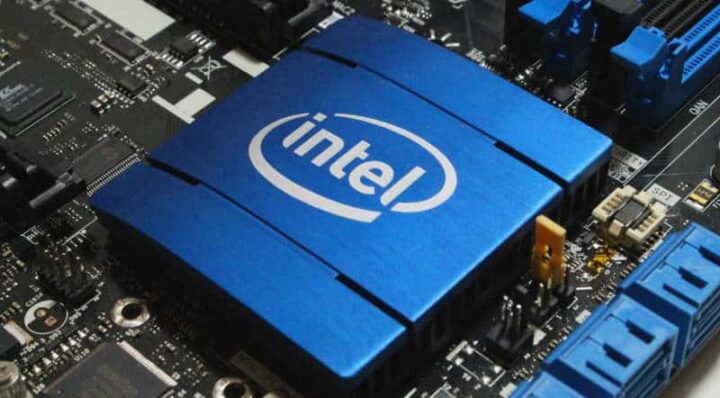
North Bridge Function
The north bridge is known as GMCH or Graphic and Memory Controller Hub, and it is a chip that carried components that needed high communication speeds, meaning that it controlled the memory, PCIe, and IGP. Don't worry if you don't understand any of these terms now, this is done through what is called the front side bus or FSB.
The north bridge itself, in principle, still exists, but it is no longer actually present, but rather it is present inside the processors themselves, and inside some of the basic chips of the motherboard, depending on the generation of the board.
South Bridge
The south bridge is known as the input/output controller or the expansion controller and is responsible for connecting almost everything else, storage devices or input and output units or PCIe sockets as well or USB or SATA. In this case, it does not require huge and gigantic speeds unlike the north bridge, so the one responsible for the data transfer process here is the slower buses and they connect to the processor indirectly through the north bridge.
processor clock
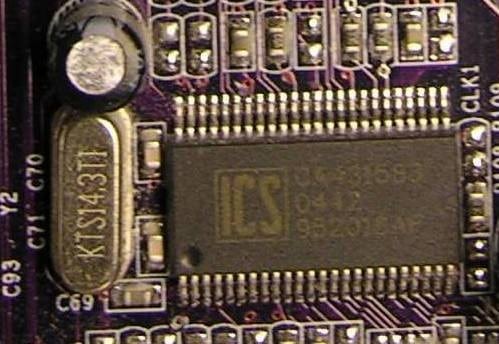
The processor clock or CPU clock is responsible for synchronizing the operation of all parts of the computer with each other and providing the basic timing signal for the CPU, using a quartz crystal. This clock helps to revive the processor by providing continuous pulses to the processor.
For example, a processor with a speed of 2MHz will receive 2 million pulses per second, another processor with a speed of 2GHz receives 2 billion pulses per second.
This clock can be used to synchronize data pulses between the sender and the receiver. It is also used in what is called the system clock or real-time clock, and its function is to fix the real time on the computer and make this data available on the device.
Expansion Slots
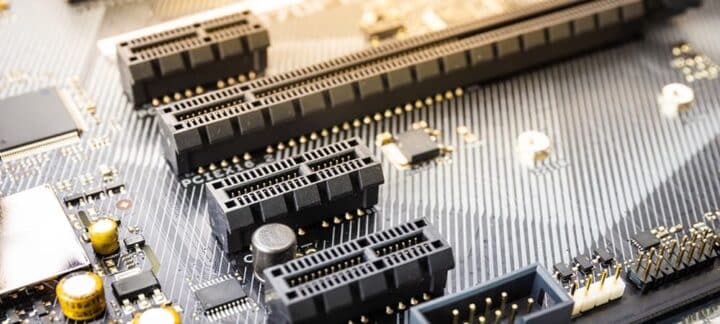
Many of you know the term PCI that is used everywhere, it is an abbreviation for Peripheral component interconnect and is considered a means of connecting components to the computer, the function of these ports is to install additional components such as graphics cards, network adapters, or additional sound cards, PCI in general is an expansion bus used to transfer data between the computer or processor and connected additional devices, PCIe ports have also evolved over time and have had several generations, currently there is a PCIe 5.0 port that carries speeds of up to 63GB/s which is double the fourth generation PCIe 4.0
Storage connectors
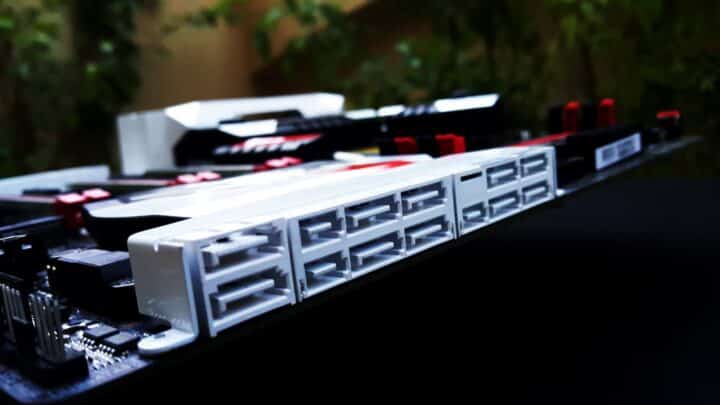
There are two types of connectors, the first type is called SATA or Serial ATA, which is the connection method used to connect hard drives, CD and DVD optical drives, or some solid state storage units (SSDs). There are different versions of it, SATA 3.2, mSATA, and eSATA. The use of the port varies depending on the type of storage being used, or the type of component that will be installed. mSATA or mini-SATA is used for SSD storage units or 2.5-inch HDD disks (those found in laptops) because they are smaller in size and consume less power.
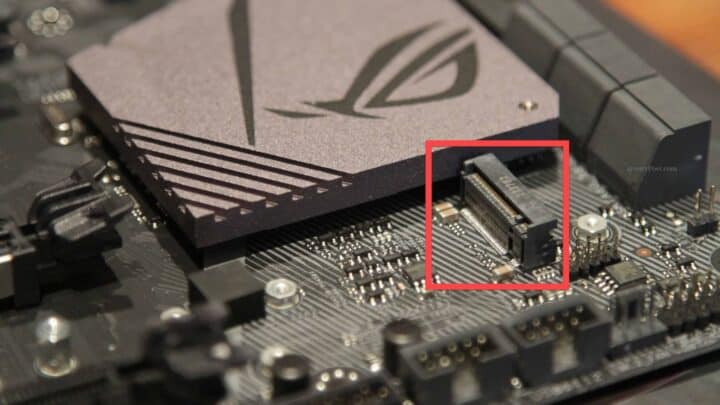
The other type is the M.2 type, which has the SATA 3 type available for installing the SSD, or better yet, the NVMe type for installing an SSD of much faster categories, which reaches a speed of 7000MB/s and more with the new generation that will support PCIe 5.0 speeds. We talked a lot about the SSD and storage units in many previous articles. You can read old articles from our site about them to learn more.
Power connectors

Every computer has a main power supply unit (PSU) which in turn supplies power to all the components on the motherboard. Of course, there is a problem when you connect all the components of the device directly with one wire, so more than one input is used for the power cables that reach from the PSU to the motherboard . There is a special input for the RAM, a special input for the processor and its cooling, and another input for the chipsets. Almost everything that is installed on the motherboard is connected to power through the motherboard, except for large and modern graphics cards that get their power separately through the PSU.
ROM
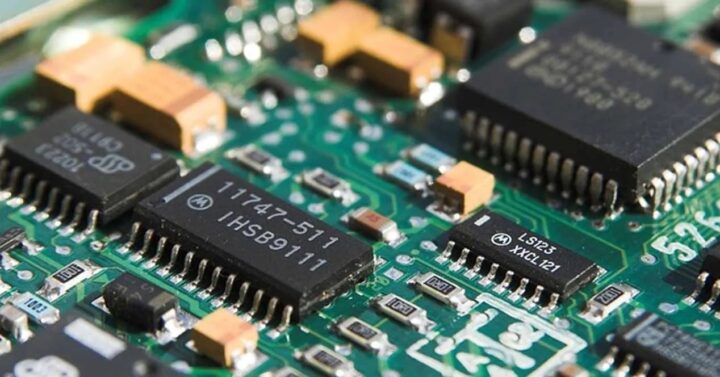
Every motherboard contains a fixed memory or Flash ROM, which is a type of non-volatile memory used to store the BIOS instructions for the system. The BIOS is the basic system for any motherboard and is an abbreviation for Basic input and output System, which connects all the device's hardware to each other. The BIOS, of course, differs from one type of motherboard to another. It is developed by the motherboard manufacturer, and is stored in the Flash ROM under the name firmware, and is usually updatable.
CMOS battery
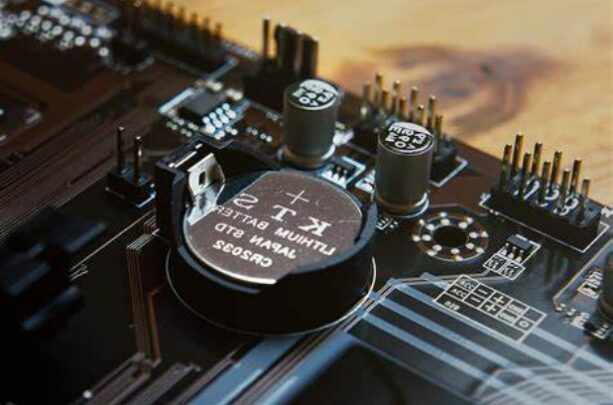
Motherboards also include a set of random access memory called CMOS or Complimentary Metal Oxide Semiconductor, which works continuously in the computer and does not stop. It also works with a battery called CMOS. This memory works continuously and keeps the memory working even if the computer is cut off from power, which does not reset the computer's information when it is restarted again. This memory is made from CMOS units because it requires a very small amount of power to work, and it stores all the basic information about the device, such as the types of floppy disks, hard drives, information about the central processing unit, input information, and others.
Other Ingredients
- USB ports : They are well-known for connecting any external devices. Now, USB ports are used to connect almost all devices, including printers, mice, keyboards, and some types of headphones.
- USB Type-C : A special type of USB ports that all companies have recently added to their ports to unify the ports used in devices. There are advanced types of it called Thunderbolt, which can connect anything to the device, even if it is a full screen .
- VGA/HDMI/DP/DVI and other inputs : Inputs for installing monitors, although DVI and VGA inputs are not widespread now and the greater use is for HDMI and DP inputs.
- Busses : These are copper lines distributed throughout the motherboard that transfer electrical current between the motherboard components.
- Capacitors : They are responsible for distributing electrical signals, especially electrical signals that reach the processor, and their power is measured in farads.
Types of motherboards
AT Motherboard
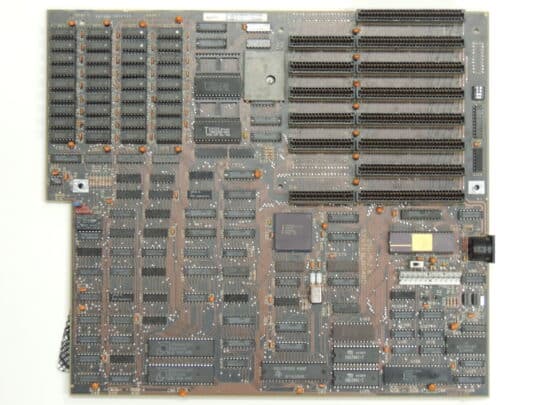
It is an abbreviation for Advanced Technology Motherboard and it was the most popular motherboard from 1980 to 1990 and was produced by IBM. It contained ISA ports, but the modern types have PCI ports. The dimensions of the board are 8.66 x 13 inches, with a type with dimensions of 12 x 13 inches. This type is not popular now, as there are newer types that have appeared on the scene.
ATX Motherboard
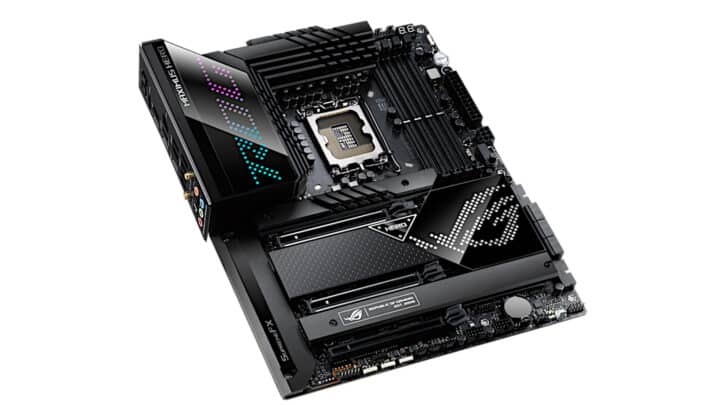
Advanced type of AT, is an abbreviation for Advanced Technology Motherboard Extended, and it is an advanced type that appeared after 1996, and it is the type used now. Almost all motherboards that you will see in your life are of the ATX type. There is a special type of it called mini AT for smaller computers, which is not much different from it except that it is smaller in size and does not have the same freedom to add components to the board like this.
NLX Motherboard
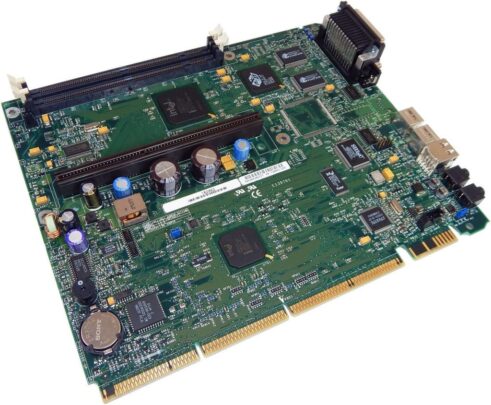
New Low-Profile EXtended motherboard is a type similar to ATX motherboards and unlike all computers it is provided for very small and thin computers, and the method of installing accessories in these motherboards is different from any other motherboard. It was introduced in early 1987, but we did not see it in a strong form until after 1996.
Explaining the different methods of cooling the computer and the best of them
What is a motherboard and what are its most important components?

